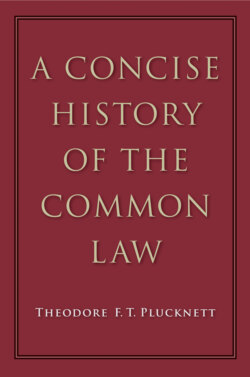Читать книгу A Concise History of the Common Law - Theodore F. T. Plucknett - Страница 139
На сайте Литреса книга снята с продажи.
FACTORS IN THE GROWTH OF THE COMMON LAW
ОглавлениеAt this point, moreover, it is well to remember the striking passage in Maitland’s Constitutional History where he indicates six principles which combined to increase the jurisdiction of the royal courts. They are briefly these:1
(1) Under the Norman kings the Crown by its writ of right supplied the real or imaginary defects of justice in the feudal courts.
(2) Under Henry II it was established that no man need answer for his freehold without a royal writ unless he cared to.2
(3) Henry II also ordained that a defendant in certain pleas of land in the King’s Court could have jury trial (grand assize) instead of battle if he chose.
(4) The possessory assizes established by Henry II deliberately ignored the feudal courts and by their swiftness immediately became very popular.
(5) The idea of contempt was used very effectively. The King would issue a writ ordering a subject to do right and justice, and if he refused, he was guilty of contempt of the King’s writ. The defendant in a writ of debt, for example, not only denies his liability, but also denies tort and force in resisting the King’s command.
(6) The idea of the King’s peace was not only the basis of criminal jurisdiction, but could also be used to enlarge the civil jurisdiction of the King’s Court. This was effected through the action of trespass, which although criminal in form was constantly becoming more and more a civil action.
